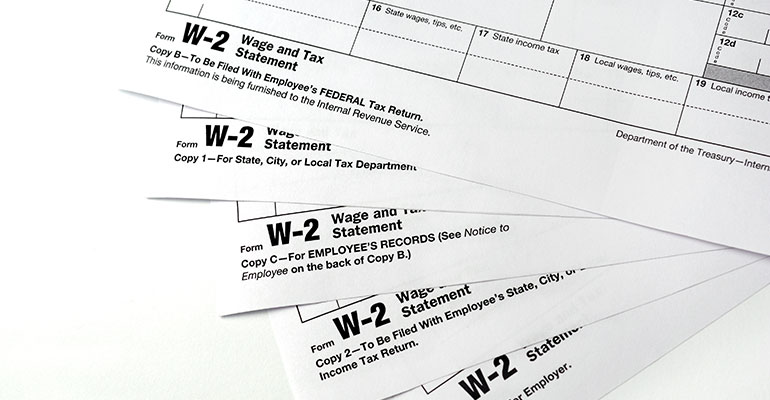
Filing back taxes can be a daunting task, especially if you don’t have all the necessary documents. One of the most crucial forms needed to file taxes is the W-2, which shows your income and taxes withheld by your employer. However, if you’re missing your W-2 or it’s incorrect, you can still file your taxes using other available resources. In this post, we’ll discuss how to file back taxes without W-2 forms and what steps you can take to ensure you do it correctly.
Step 1: Request a Copy of Your W-2
If you’re missing your W-2, the first step you should take is to request a copy from your employer. Legally, your employer is required to provide you with a W-2 no later than January 31st of the following year. However, if you haven’t received your W-2, you can request a copy from your employer. You can also contact the IRS and request a transcript of your W-2. A transcript shows the same information as the W-2 but is not an exact copy.
Step 2: Use Form 4852
You can substitute Form 4852, Substitute for Form W-2, Wage, and Tax Statement if you are unable to obtain a copy of your W-2. Using your pay stubs or other available documents, you can estimate your income and taxes withheld on this form. On the form, you must include the name, address, and employer identification number (EIN) of your employer. Also required are your yearly estimated wages and taxes deducted.
Step 3: Gather Your Pay Stubs
If you don’t have access to your W-2 or your employer is unable to provide you with a copy, you can use your pay stubs to estimate your income and taxes withheld. Your pay stubs should show your gross income, taxes withheld, and other deductions such as healthcare, retirement contributions, or other benefits. You’ll need to add up your pay stubs for the year to estimate your total income and taxes withheld.
Step 4: Use IRS Form 1040
Once you’ve estimated your income and taxes withheld, you’ll need to file your taxes using IRS Form 1040, Individual Income Tax Return. You’ll need to fill out the form and include your estimated income and taxes withheld on line 1 and line 2, respectively. You’ll also need to include any other sources of income, such as interest, dividends, or self-employment income. You may also be eligible for tax credits or deductions, which can reduce your tax liability.
Step 5: File Your Taxes Electronically or by Mail
You can file your taxes electronically using IRS Free File or other tax preparation software. If you choose to file electronically, you’ll need to provide your estimated income and taxes withheld on the form. You’ll also need to provide any other information required by the software, such as your name, address, social security number, and bank account information for direct deposit or payment. If you prefer to file by mail, you can print out the form and mail it to the appropriate address listed on the IRS website.
Step 6: Pay Any Taxes Owed
You must pay any taxes you owe by the due date, which is typically April 15th. You can request an extension to file your taxes or set up a payment plan with the IRS if you’re unable to pay your taxes in full.
Tips for Filing Back Taxes Without W-2
- Keep Accurate records of Your Income and Taxes Withheld: If you’re missing your W-2, it’s important to keep accurate records of your income and taxes withheld throughout the year. This can include pay stubs, bank statements, or other documentation that shows your income and taxes paid. By keeping accurate records, you can easily estimate your income and taxes withheld when filing your taxes.
- Contact the IRS for Assistance: You can ask the IRS for help if you’re having trouble getting your W-2 or figuring out your income and taxes withheld. The IRS offers resources to assist taxpayers in filing their taxes, such as the Volunteer Income Tax Assistance (VITA) program, which helps eligible taxpayers prepare their taxes for free.
- Consider Hiring a Tax Professional: If you have a complicated tax situation or are unsure how to file your taxes without a W-2, you might want to think about hiring a tax expert. A tax expert can guide you through the tax process and make sure your taxes are filed accurately.
- Be Aware of Tax Deadlines: When filing your back taxes without a W-2, it’s critical to be aware of the deadlines. Normally, the tax filing deadline is April 15th, but depending on your circumstances, it may be different. You can ask for a deadline extension if you are unable to file your taxes by the due date, but you must still pay any taxes that are still owed by that date to avoid penalties and interest.
- Double-check Your Calculations: When estimating your income and taxes withheld without a W-2, it’s important to double-check your calculations to ensure accuracy. You don’t want to underestimate or overestimate your income or taxes paid, as this can result in penalties or interest owed to the IRS.
Filing back taxes without a W-2 can be challenging, but it’s not impossible. By following the steps outlined in this post and being aware of important deadlines and tips, you can file your taxes accurately and avoid penalties and interest owed to the IRS.
